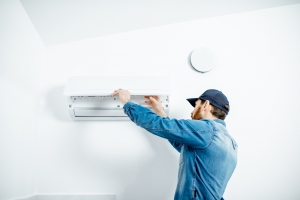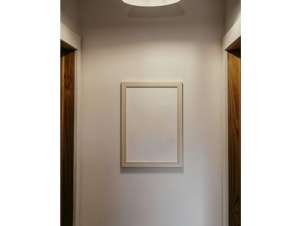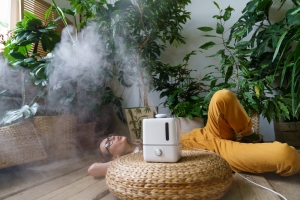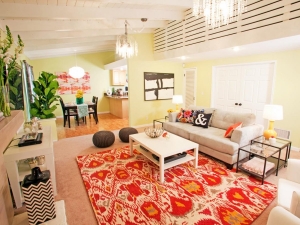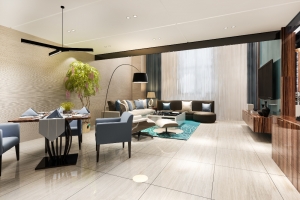Let's be honest, air conditioning is a blessing, but it's not exactly kind to your wallet or the planet. The early-season heat dome has already pushed parts of the U.S. to their highest temperatures in years, according to NPR. No wonder the temptation to crank the AC is stronger than ever.
Every summer, millions blast the AC to escape the heat, then wince at the energy bill. The good news is that it's not the only solution to stay cool.
From centuries-old architectural tricks to modern innovations like the backyard plunge pool, there are smarter and more sustainable ways to cool off. Some cost nothing. Others are small investments with big returns in comfort.
Let's break down how you can master the art of staying cool without an AC..
Strategic Ventilation: Nature's Air Conditioner
Open windows are obvious. But how you open them matters. To create a cross-breeze, open windows or doors on opposite sides of your home. Add box fans facing outward on one side to push hot air out, while pulling cooler air in from the shaded side.
If your home has multiple storeys, take advantage of the stack effect. This natural process relies on convection: cool air enters through lower-level windows, absorbs indoor heat, then rises and exits through upper windows.
As that warm air escapes, it creates a partial vacuum that draws more fresh air in from below. It's especially effective in open layouts with features like cathedral ceilings, clerestories, or operable skylights.
Cool Your Body, Not the Room
Sometimes the trick isn't to chill the entire house, it's to cool you.
Try soaking your feet in a basin of cold water, wearing loose cotton clothes, and sipping cucumber-mint water throughout the day. You'll be amazed at how quickly these tricks regulate your internal temperature.
Want something more refreshing? A quick dip in a plunge pool does more than just cool you off; it resets your whole system. Plunge pools are compact and use less water. According to C&H Landscaping, they fit easily into smaller shaded areas and are quicker to set up.
But here's the real kicker: cold plunges aren't just a luxury. Studies show that acute and repeated cold exposure can improve insulin sensitivity, which helps regulate blood sugar and boost metabolic health.
It's like hitting a personal reboot without touching the thermostat.
Make the Most of Shade and Curtains
Curtains are your first line of defense against summer heat. Yet despite most window coverings being operable, a U.S. Department of Energy study found that 75% stay in the same position every day. That's a missed opportunity.
Closing blinds or thermal curtains on south- and west-facing windows during the day can significantly cut indoor heat. Medium-colored drapes with white plastic backings, for instance, can reduce heat gain by about 33%.
Cellular shades, especially when fitted snugly, can slash solar heat transfer by up to 60%, cutting total solar gain down to just 20%. Even regular blackout curtains can drop a room's temperature by several degrees.
Don't stop inside, outside shade matters too. Try shade sails, pergolas, or let climbing plants like ivy or bougainvillea cover sun-exposed walls. Natural shade cools surfaces and makes your home more comfortable, inside and out.
Water Features That Actually Work
Water cools by evaporation- it's simple physics, and ancient civilizations knew how to make the most of it. Persian homes used wind towers and open water features to create natural cooling long before modern AC ever existed. You can apply the same logic today, without a tech upgrade.
Start with something easy: place shallow bowls or trays of water near sunny windows or breezy corners. As the water evaporates, it pulls heat from the surrounding air, lowering the temperature bit by bit. Indoors, drying laundry on a rack or leaving a damp towel draped over a chair adds to the effect. It may sound small, but combined, these passive techniques can make a room noticeably more comfortable.
Outdoors, a misting system is a real MVP. On patios or balconies, it sprays ultra-fine water droplets that evaporate instantly, cooling the air around you without soaking everything. Even better, pair it with a fan for a DIY evaporative cooler.
Go Green (Literally)
Plants do more than purify air; they cool it. Through transpiration, plants release moisture that can subtly lower the temperature around them. That's why shaded gardens and green courtyards feel fresher.
Indoors, adding greenery like ferns, peace lilies, or snake plants can make rooms feel fresher and more breathable. They help regulate humidity and clean the air, too. Outdoors, consider planting tall shrubs or shade trees near sun-facing windows. They act like living blinds, blocking solar heat before it even hits your walls.
If you want to take it a step further, consider green roofs. These are rooftop gardens or plant-covered surfaces that can drastically cut heat absorption. According to research, green roofs can be up to 56°F cooler than traditional roofs. Moreover, it can reduce surrounding air temperatures by as much as 20°F.
Reclaim the Evening Air
One of the most overlooked ways to stay cool is by simply adjusting your daily routine. The early morning and late evening hours are naturally cooler, and using them wisely can make a real difference.
Try scheduling physical tasks- walking the dog, running errands, or working out during these windows instead of the blazing afternoon. Not only will you feel more comfortable, but you'll also reduce the strain on your body and avoid unnecessary heat stress.
At home, throw open your windows in the early hours to let in the crisp morning air. Once the temperature starts rising, usually by mid-morning, shut the windows and draw the curtains to trap that cool air inside. This simple timing shift can keep your space more livable and keep you from reaching for the AC remote.
FAQs
What is thermal mass, and how does it help keep a home cool?
Thermal mass is the capacity of a material to soak up and retain heat. Materials like brick, concrete, and tile soak up daytime heat and release it slowly, keeping interiors stable. In well-designed homes, thermal mass reduces the need for mechanical cooling.
Are smart thermostats useful if I'm trying to cut back on AC use?
Yes, especially for zoning and efficiency. Smart thermostats learn your habits and adjust temperatures accordingly. Even if you run AC sparingly, they can automate fans, window sensors, and ventilation cycles to cool smarter. Many models also track energy usage in real time.
How does humidity impact how hot it feels inside a home?
Humidity prevents sweat from evaporating, which is how your body cools itself. So, even if the thermometer says 85°F, high humidity can make it feel like 95°F or more. That's why managing moisture indoors via fans or dehumidifiers is crucial for comfort.
Overall, beating the heat isn't just about staying comfortable; it's about taking back control. When your only solution is to blast AC day and night, you're at the mercy of machines and energy bills. But when you understand how your space works and how your body responds, you get options.

